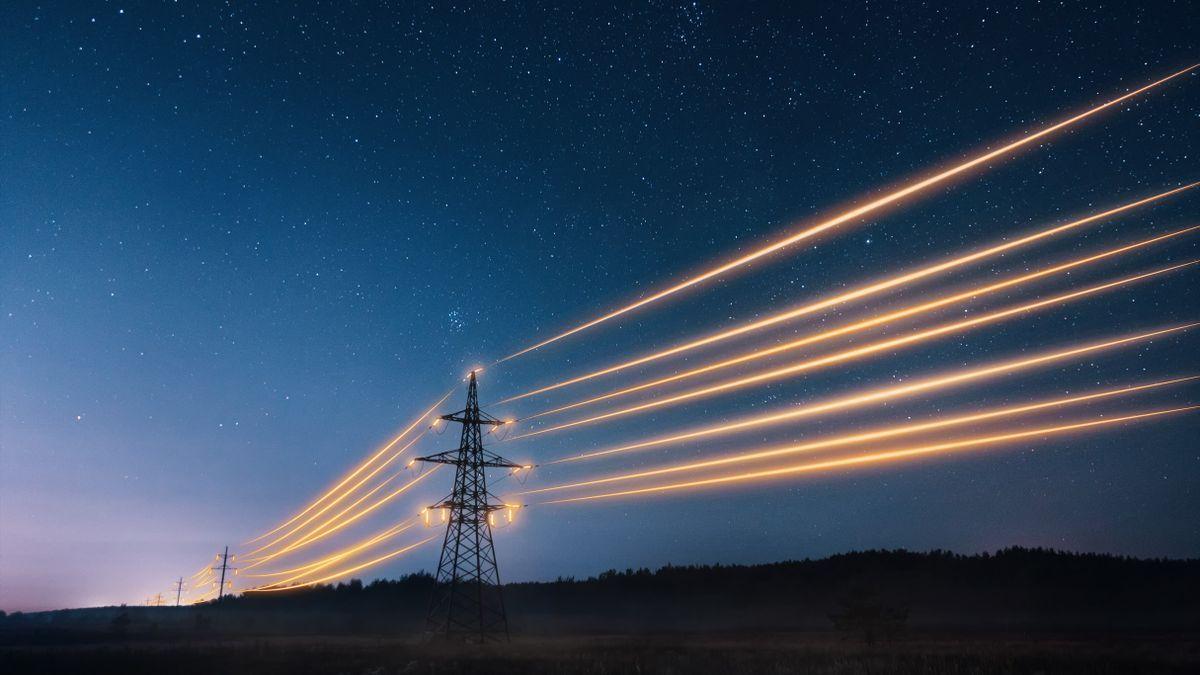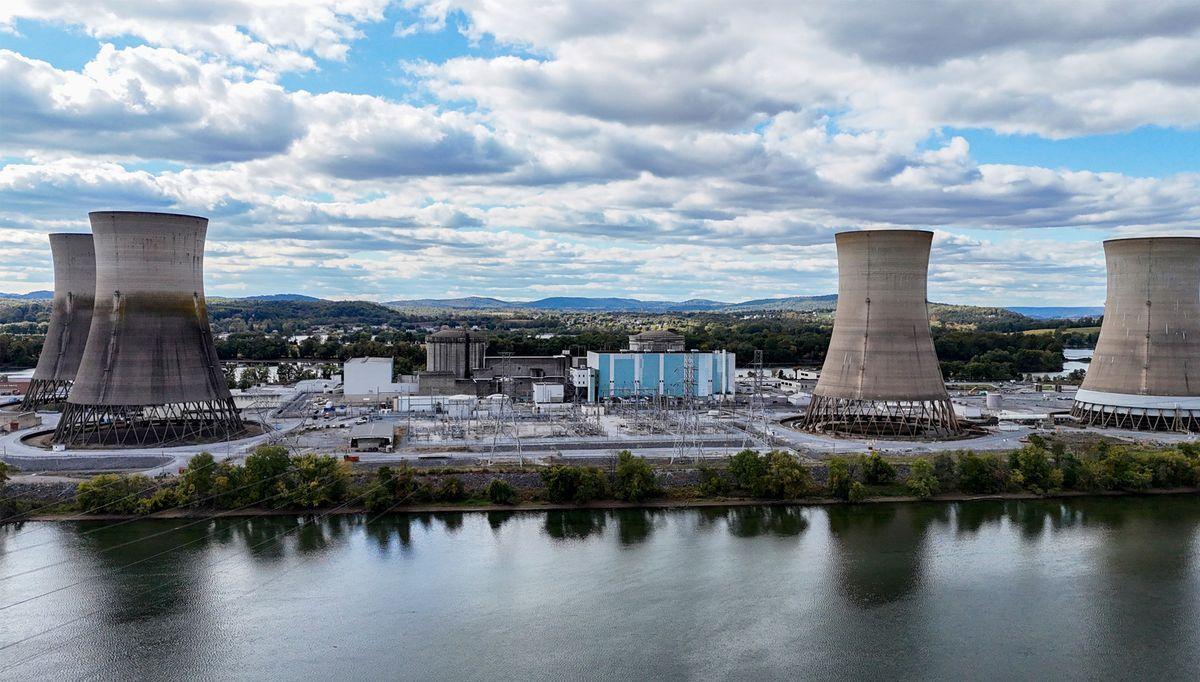AI Data Centers Strain US Power Grid, Raising Concerns for Future Reliability
3 Sources
3 Sources
[1]
CERAWEEK Data center build-out stokes fears of overburdening biggest US grid
HOUSTON, March 13 (Reuters) - The rapid development of AI data centers is intensifying concerns about how well an aging U.S. electrical grid can hold up to that demand, energy executives and regulators said at the CERAWeek conference in Houston this week. The build-out of Big Tech's giant computer warehouses, which at a single site can consume as much power as a mid-sized U.S. city, is propelling U.S. electricity consumption to record highs. Government agencies project data center demand will triple within the next three years, consuming 12% of the entire U.S. power supply. "What we're seeing today is unprecedented growth and the challenges the grid is facing are getting more pronounced," Samir Vora, a senior power generation executive at Mitsubishi Power Americas, said in an interview. Even as electricity demand swells, generators that run on fossil fuels are retiring. New generation and power lines often toil for years in interconnection queues, tightening the delicate supply-demand balance needed to avoid blackouts. "When it comes to the reliability of the electric grid, we have a rendezvous with reality," Mark Christie, who leads the Federal Energy Regulatory Commission (FERC), said at the conference on Thursday. Christie said that reality has become the most stark in the country's biggest electrical grid, PJM Interconnection, which covers 13 states and the District of Columbia. PJM's service area has the world's largest concentration of data centers, with member state Virginia routing about 70% of global internet traffic through the state. In its latest capacity auction, PJM announced prices that were more than 800% higher than the previous year, with the grid operator citing rising demand and shrinking supply. "I'm optimistic that this is a solvable problem but it is certainly not a trivial problem," Manu Asthana, CEO of PJM, said on a panel discussion. PJM projects its peak demand to grow from 152 gigawatts to 184 gigawatts by 2030, with nearly all of the additions coming from data centers, Asthana said. Without the quick addition of new power supply, supply and demand pinches will increasingly expand to other parts of the country, FERC's Christie said. "It's going to become more stark in other multi-state regions, too," he warned. Reporting by Laila Kearney; Editing by Liz Hampton Our Standards: The Thomson Reuters Trust Principles., opens new tab Suggested Topics:Climate & EnergyRegulatory OversightGovernanceGrid & InfrastructureNuclear
[2]
Data center build-out stokes fears of overburdening biggest US grid
AI data centers are driving record US electricity demand, straining the aging grid. With fossil fuel plants retiring and new power projects delayed, regulators warn of reliability risks, especially in PJM's high-demand region.The rapid development of AI data centers is intensifying concerns about how well an aging US electrical grid can hold up to that demand, energy executives and regulators said at the CeraWeek conference in Houston this week. The build-out of Big Tech's giant computer warehouses, which at a single site can consume as much power as a mid-sized US city, is propelling US electricity consumption to record highs. Government agencies project data center demand will triple within the next three years, consuming 12% of the entire US power supply. "What we're seeing today is unprecedented growth and the challenges the grid is facing are getting more pronounced," Samir Vora, a senior power generation executive at Mitsubishi Power Americas, said in an interview. Even as electricity demand swells, generators that run on fossil fuels are retiring. New generation and power lines often toil for years in interconnection queues, tightening the delicate supply-demand balance needed to avoid blackouts. "When it comes to the reliability of the electric grid, we have a rendezvous with reality," Mark Christie, who leads the Federal Energy Regulatory Commission (FERC), said at the conference on Thursday. Christie said that reality has become the most stark in the country's biggest electrical grid, PJM Interconnection, which covers 13 states and the District of Columbia. PJM's service area has the world's largest concentration of data centers, with member state Virginia routing about 70% of global internet traffic through the state. In its latest capacity auction, PJM announced prices that were more than 800% higher than the previous year, with the grid operator citing rising demand and shrinking supply. "I'm optimistic that this is a solvable problem but it is certainly not a trivial problem," Manu Asthana, CEO of PJM, said on a panel discussion. PJM projects its peak demand to grow from 152 gigawatts to 184 gigawatts by 2030, with nearly all of the additions coming from data centers, Asthana said. Without the quick addition of new power supply, supply and demand pinches will increasingly expand to other parts of the country, FERC's Christie said. "It's going to become more stark in other multi-state regions, too," he warned.
[3]
Data center build-out stokes fears of overburdening biggest US grid
HOUSTON (Reuters) - The rapid development of AI data centers is intensifying concerns about how well an aging U.S. electrical grid can hold up to that demand, energy executives and regulators said at the CERAWeek conference in Houston this week. The build-out of Big Tech's giant computer warehouses, which at a single site can consume as much power as a mid-sized U.S. city, is propelling U.S. electricity consumption to record highs. Government agencies project data center demand will triple within the next three years, consuming 12% of the entire U.S. power supply. "What we're seeing today is unprecedented growth and the challenges the grid is facing are getting more pronounced," Samir Vora, a senior power generation executive at Mitsubishi Power Americas, said in an interview. Even as electricity demand swells, generators that run on fossil fuels are retiring. New generation and power lines often toil for years in interconnection queues, tightening the delicate supply-demand balance needed to avoid blackouts. "When it comes to the reliability of the electric grid, we have a rendezvous with reality," Mark Christie, who leads the Federal Energy Regulatory Commission (FERC), said at the conference on Thursday. Christie said that reality has become the most stark in the country's biggest electrical grid, PJM Interconnection, which covers 13 states and the District of Columbia. PJM's service area has the world's largest concentration of data centers, with member state Virginia routing about 70% of global internet traffic through the state. In its latest capacity auction, PJM announced prices that were more than 800% higher than the previous year, with the grid operator citing rising demand and shrinking supply. "I'm optimistic that this is a solvable problem but it is certainly not a trivial problem," Manu Asthana, CEO of PJM, said on a panel discussion. PJM projects its peak demand to grow from 152 gigawatts to 184 gigawatts by 2030, with nearly all of the additions coming from data centers, Asthana said. Without the quick addition of new power supply, supply and demand pinches will increasingly expand to other parts of the country, FERC's Christie said. "It's going to become more stark in other multi-state regions, too," he warned. (Reporting by Laila Kearney; Editing by Liz Hampton)
Share
Share
Copy Link
The rapid growth of AI data centers is pushing US electricity demand to record highs, raising concerns about the aging power grid's ability to meet future needs. Energy executives and regulators warn of potential reliability issues as fossil fuel generators retire and new power projects face delays.

AI Data Centers Drive Unprecedented Power Demand
The rapid development of artificial intelligence (AI) data centers is pushing U.S. electricity consumption to record highs, raising serious concerns about the ability of the aging electrical grid to meet this growing demand. Energy executives and regulators at the recent CERAWeek conference in Houston highlighted the challenges posed by this unprecedented growth
1
.Samir Vora, a senior power generation executive at Mitsubishi Power Americas, emphasized the scale of the issue: "What we're seeing today is unprecedented growth and the challenges the grid is facing are getting more pronounced"
2
.Projected Growth and Power Consumption
Government agencies project that data center demand will triple within the next three years, potentially consuming 12% of the entire U.S. power supply. These massive computer warehouses can each consume as much power as a mid-sized U.S. city
3
.PJM Interconnection: A Case Study
The situation is particularly critical in the PJM Interconnection, the country's largest electrical grid covering 13 states and the District of Columbia. Mark Christie, head of the Federal Energy Regulatory Commission (FERC), stated, "When it comes to the reliability of the electric grid, we have a rendezvous with reality"
1
.PJM's service area hosts the world's largest concentration of data centers, with Virginia alone routing about 70% of global internet traffic. The grid operator projects peak demand to grow from 152 gigawatts to 184 gigawatts by 2030, with data centers accounting for nearly all of this increase
2
.Related Stories
Challenges and Potential Solutions
Several factors compound the challenge of meeting this growing demand:
- Retirement of fossil fuel generators
- Delays in new power generation projects and transmission lines
- Tightening supply-demand balance, increasing the risk of blackouts
Manu Asthana, CEO of PJM, expressed cautious optimism: "I'm optimistic that this is a solvable problem but it is certainly not a trivial problem"
3
.Wider Implications
FERC's Christie warned that without quick additions to power supply, these supply and demand pressures could spread to other parts of the country. "It's going to become more stark in other multi-state regions, too," he cautioned
1
.As the AI industry continues to grow, balancing technological advancement with sustainable power infrastructure remains a critical challenge for policymakers, energy providers, and tech companies alike.
References
Summarized by
Navi
[3]
Related Stories
US Power Grid Struggles to Keep Pace with AI Data Center Boom, While China Surges Ahead
15 Aug 2025•Business and Economy

US Utilities Face Unprecedented Power Demands from AI Data Centers
07 Apr 2025•Business and Economy

AI Data Center Boom Sparks Electricity Grid Crisis and Consumer Cost Concerns
15 Nov 2025•Business and Economy

Recent Highlights
1
AI Chatbots Sway Voters More Effectively Than Traditional Political Ads, New Studies Reveal
Science and Research

2
OpenAI declares code red as Google's Gemini 3 gains 200 million users in three months
Technology

3
Trump approves Nvidia H200 chip exports to China with 25% revenue cut, defying Senate concerns
Policy and Regulation





